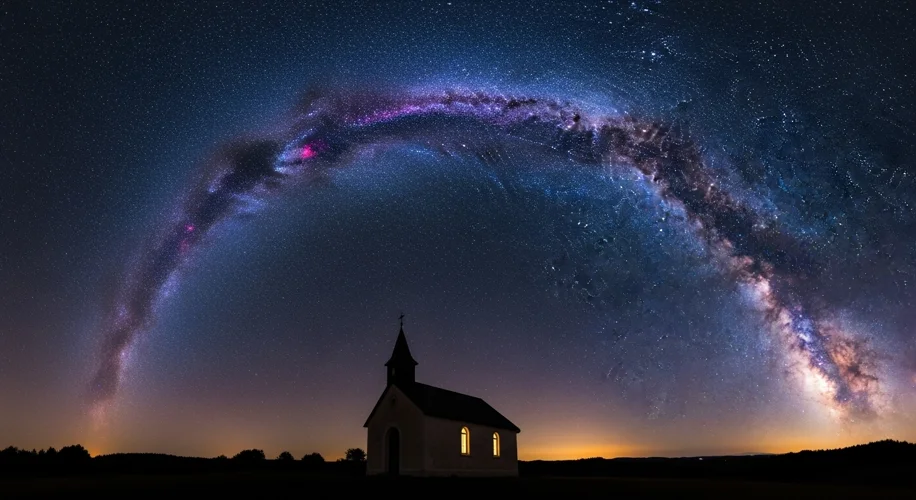The title ‘Milky Way and a Chapel’ sounds like the start of a poem, doesn’t it? It’s unusual, almost mystical. But for me, a scientist who spends her days thinking about our planet and its atmosphere, it sparks a different kind of wonder. It’s about finding perspective, a connection between the vastness of the cosmos and the quiet, reflective spaces we create for ourselves.
For years, my work has been focused on the intricate systems that govern our climate. I study atmospheric physics, which means understanding how sunlight interacts with gases, how weather patterns form, and how human actions are altering these delicate balances. It’s easy to get lost in the data, the models, the urgent need for action. We talk a lot about carbon emissions, sea-level rise, and global temperatures – important, critical issues, no doubt.
But sometimes, it’s good to just look up. And when you look up on a clear night, away from city lights, you see it: the Milky Way. Our own galaxy, a breathtaking band of stars stretching across the sky. It’s a reminder that our planet, our atmosphere, our entire existence, is part of something so much larger, so much older.
Thinking about the Milky Way alongside a chapel isn’t about comparing religions or philosophies. Instead, it’s about how we humans try to make sense of it all. Chapels, in their many forms, are places where people go to contemplate, to feel connected to something beyond themselves, to find peace. They are spaces designed for reflection.
The Milky Way is our grandest, most humbling natural cathedral. It’s a place of unimaginable scale and complexity. The sheer number of stars, the distances involved, the processes of star birth and death – it’s mind-boggling. When I look at it, I see not just a beautiful spectacle, but also the fundamental physics that govern the universe. The same physical laws that shape our atmosphere are at play in the formation of galaxies and stars.
This connection is powerful. It reminds me that the challenges we face, like climate change, are not just local or regional problems. They are planetary, and in the grand cosmic scheme, they are part of a larger story of how life interacts with its environment. Our ability to understand the universe, to map the stars, to build observatories, and to contemplate our place within it, is a testament to our intellect and our curiosity.
It also highlights the fragility of our home. Earth is a tiny, blue marble in this vast expanse. The atmosphere that protects us, that sustains life, is incredibly thin. Yet, we are altering it at an unprecedented rate. The ‘chapel’ of Earth, with its unique capacity for life, is something we need to protect with the same reverence we might offer a sacred space.
So, the next time you have a chance, step outside on a clear night and look up. Let the Milky Way offer you a moment of perspective. It’s a reminder of the incredible universe we inhabit and the preciousness of the small corner of it we call home. Understanding our place in the cosmos can, perhaps, help us better understand our responsibility to it.
What steps can you take? Start by looking up. Then, consider how you can contribute to protecting our planet. Simple actions, multiplied by many, create significant change. Reducing your carbon footprint, supporting sustainable practices, and advocating for climate-friendly policies all matter. Let’s be good stewards of this extraordinary home we share.

